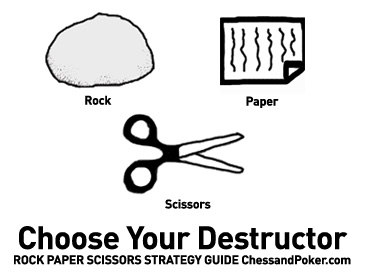WARMACHINE: Threats, Vectors, and You!
7 Minute Read
Oct 28 2010

Advertisement
When making a list in Warmachine, there’s lots of considerations put into list building. One of the most basic, and least talked about, considerations is how your list does damage (i.e. – wins) and how your list prevents damage (i.e. – doesn’t lose). Today, let’s consider how threat vectors affect Warmachine/Hordes list design.
Recently, relasine discussed some more advanced facets of list building and HERO talked about some tactical considerations on what I would call “tempo”. Both of these articles touched on threat vectors, but nether did so explicitly. This statement begs the question: “What is threat vector and how does it affects list building?”
A “threat vector” in Warmachine is a way to describe attack type – principally – ranged attacks, magic (aka – spell) attacks, and melee attacks. Many special abilities can enhance these attack types (e.g. – The Retribution warcaster Adeptus Rahn’s feat gives friendly in his control area boosted magic attack and damage rolls); however, many special abilities deny a specific attack type (e.g. – The ability Spell Ward prevents a model from being targeted by spells).
The three main threat vectors each have different trade-offs in terms of threat range (typically, ranged attacks/spells have an advantage here) vs. damage output (generally, melee attacks have a higher potential damage output, depending on a myriad of factors). I’m not going to get into this in too depth, as all of these factors can be controlled via list building.
Speaking of list building: a key strategic consideration in Warmachine is deciding how you want to kill the enemy’s models and/or how you want to stop the enemy from killing your models. A key portion of putting a list together involves picking a combo or synergy between models that you feel will win you the game (often called a “win condition” or “kill condition”): either via killing the enemy warcaster, destroying the majority of the enemy’s army, or winning by scenario. Alternatively, a list can hinge on preventing reprisal to your army while doling out damage unabated. This isn’t a “kill condition” per se, but assembling a successful list under this paradigm typically requires a working knowledge of threat vectors.
Let’s walk-through an example of building a list around a kill condition. Relasine, Lux, and Hero have all covered building a list that synergizes with a warcaster’s feat/spell list, so I’m going focus on a warcaster who wants to build a combo around himself. Specifically: Epic Caine.
(The name’s Caine. Epic Caine.)
Epic Caine has an excellent potential to kill an enemy warcaster or their army through use of his rate-of-fire (ROF) infinity pistols (yes, that’s right – he can always spend a focus to buy an additional ranged attack). Stack on top of this his ability to ignore a myriad of defensive buffs (True Sight) and an in-borne ability to increase his damage output through use of his feat, the aptly named “Overkill” (which gives him +1 to his damage roll for each successful ranged attack that hits, along with an ability to remove from play [RFP] models and create 3″ AOEs on destruction).
So how do we improve our kill condition? Well, improving Caine’s accuracy (albeit above his intrinsic RAT 9 score) never hurt, so Ranger’s synergize well with Caine. Caine really appreciates additional threat range, so the additional movement granted from Madelyn Corbeau would be useful. How about an extra shot with his pistols? Reinhodlt is in. An extra focus? Squire, come on down! Stripping defensive buffs AND focus? Epic Eiryss, you’ve made the cut.
So far, our list looks like this:
eCaine
– Squire
Rangers (6)
Reinholdt, Gobber Speculator
Madelyn Corbeau
Epic Eiryss
That’s a lucky 13 points, and we still have our five warjack points.
From here, we can progress with two different build options: building a balanced list or maximizing the strengths of our current list/denying the enemy attack vectors.
In building a balanced list, we’d want to include models that covered deficiencies in our current load out. Nothing in our current list is particularly good in melee (i.e. – you’ve got a ranged threat vector), so including some solid melee troops would be a good idea (e.g. – Stormblades, Storm Lances). We’d probably also want to include some focus-efficient warjacks (as eCaine is a bit of a focus hog) and perhaps something to buff our troops. We’d probably also want to include some troop buffs and then fill to taste. My 35 pt. Balance build would look something like:
eCaine
– Stormclad
– Squire
Rangers (6)
Stormbaldes (6)
– UA
Black 13th
Journeyman Warcaster
Epic Eiryss
Madelyn Corbeau
Reinholdt, Gobber Speculator
Rhupert Carvolo, Piper of Ord
Yes, its solo heavy (and apologies for you theme players: its very Merc heavy) and I find it rugged enough to handle most other lists. Sure, Zerkova’s feat (it stops enemy models in her control area from making their initial ranged attacks) is going to be a pain – but with smart play you can weather it. Note that list still turns on delivering Epic Caine to blow holes in the enemy (hence, the “kill condition” based list building), but has a strong melee threat and some limited magic/spell damage (often enough to deal with Incorporeal models, etc).
So how about the other approach: building around a kill condition with a single threat vector? This gets tricky, and I’ll give the explicit caveat that it works bests at events where you’re able to take two lists (unlike in 40K, most Warmachine tournaments allow you to take two lists and chose which list you’re going to use after seeing which scenario you’ll be playing and what your opponent brought for lists).
Let’s take a look at a Skorne list I’ve been using lately that’s built to maximize Epic Makeda strengths (the melee vector) without addressing her weaknesses (pundits: feel free to call this the “unbalanced approach). It relies on over-whelming application of a single vector against an opponent’s limited amount of a defense/denial against this threat vector. Sure, the opponent may be able to pepper me with ranged attacks/spells, but I can usually close to them in 2 turns. One turn of shooting/magic is often not enough to hamper this list and it often wins through speed and damage output on delivery:
Skorne – 35 pts.
Epic Makeda
– Molik Karn
– Titan Gladiator
Paingiver Beast Handlers (4)
Immortals (10)
Nihilators (10)
Ancestral Guardian
This list has no ranged attacks and is not likely to use its one option for an offensive spell. It completely leverages the strength of the spell Road to War (+2″ of movement for friendly Faction non-warlock models within Makeda’s control area) and her feat (which, amongst other things, grants boosted melee attack rolls).
For those note familiar with the Skorne faction, this list’s kill condition is using Molik Karn to charge a surprisingly large distance and catch people by surprise using Side Step. The Titan Gladiator’s animus helps (and grants Pathfinder) and eMakeda’s spell Leash grants Mr. Karn a potential addition 3″ of threat range. Its not uncommon for Molik Karn to kill a warcaster 20″ away from where he begins his turn, rivaling the threat range of many ranged attacks.
On notes: despite eMakeda’s Elite Cadre, I’ve elected to not take Praetorians and have taken large amounts of infantry with Reach. This great increases my threat range and the range at which I can engage enemy models with ranged attacks. Both units are tough to put down, come in large numbers, and make for good targets for Side Step on Molik Karn (Side Step allows you to move 2″ after hitting a model, any model, and ignore free strikes while doing so.)
So what happens when I run into a list that has enough ranged attacks or melee threat denial(e.g. – Saeryn)? This list can strike from far enough away and has enough bodies in it that I can usually weather a turn of damage without losing my beasts or warlock. Alternatively, I have a nice Mordikaar list with lots of ranged attacks as my alternative list for Steamroller (e.g. – the common format that allows two lists) tournaments.
Lastly, let’s talk about a list that has denial as a part of its kill condition.
(Denial: A river in Africa AND a 5″ template in a Bloody Barnabas list. Happy Croctober, Blindwater players!)
I mentioned Saeryn above, whose feat prevents models from targeting members of her battlegroup with melee attacks for one round. While Saeryn offers several debuffs to assist her beasts in delivering a kill, she can’t quite compete with the threat range of something like the Molik Karn list posted above. That said, she can take beasts with a good-but-great threat range and ensure they’ll survive to deliver their damage. While less sexy from a threat range perspective on paper, lists that offer damage denial having been doing well on the table for as long as Warmachine has been released.
So, in sum: Building a list around a kill-condition (e.g. – a “combo”) rather than a warcaster/warlock’s set of abilities is another way to approach list building. Depending on the format of play, you may wish to address a combo’s weaknesses by including multiple threat vectors with the remainder of your list or go whole hog with combo/threat vector while accepting deficiencies in your list/potential bad match-ups.
I hope this article was helpful; I know there’s been a recent glut of Warmachine List Building articles. While this article principally addresses Strategic concerns, your battle plan is often the first causality on contact with the enemy. A future article will discuss how to best apply some tactical considerations for your kill condition and how to revise a list built using the above process. Enjoy!
Author: Guest Columnist
Advertisement




